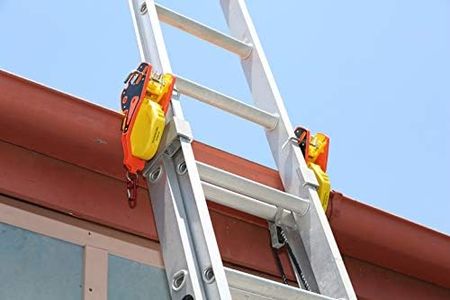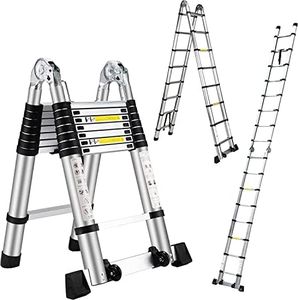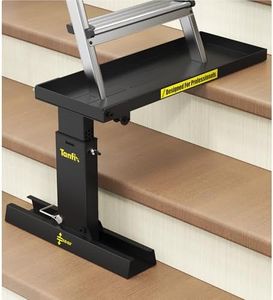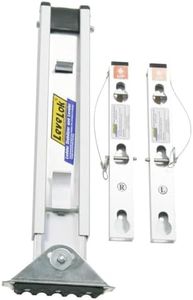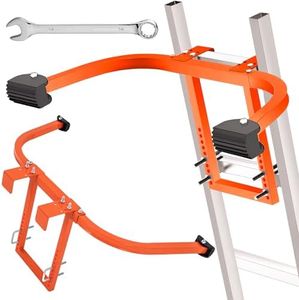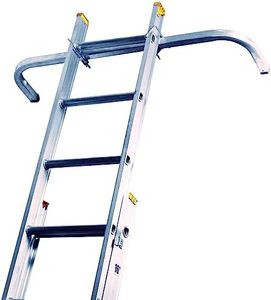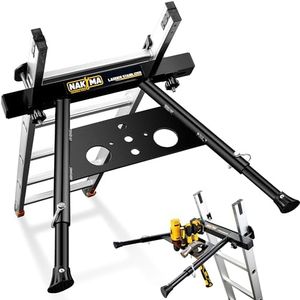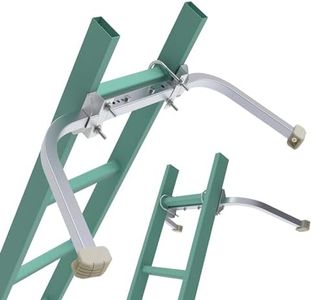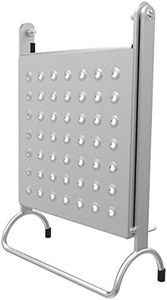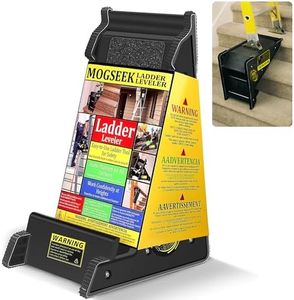We Use CookiesWe use cookies to enhance the security, performance,
functionality and for analytical and promotional activities. By continuing to browse this site you
are agreeing to our privacy policy
10 Best Ladder Stabilizers
From leading brands and best sellers available on the web.By clicking on a link to a third party's website, log data is shared with that third party.
Buying Guide for the Best Ladder Stabilizers
Choosing the right ladder stabilizer is important for both your safety and your efficiency whenever you use a ladder. A stabilizer adds extra support, helping to prevent the ladder from slipping or tipping sideways. When picking a ladder stabilizer, think about your main tasks—whether you’re painting, cleaning gutters, or working on windows—and consider the surfaces you’ll be using your ladder on, such as walls, roofs, or uneven ground. The best stabilizer for you will improve stability, protect surfaces, and be easy for you to handle.Width of StabilizerThe width of a ladder stabilizer refers to how far it extends out from each side of the ladder. This width is important because a wider stabilizer provides a bigger footprint, making the ladder more stable and less likely to tip side-to-side. Widths can range from narrow enough to fit between window frames to very wide models designed for maximum stability on large, flat surfaces. If you often find yourself working in tight or narrow spaces, a narrower stabilizer is easier to maneuver. For outdoor work or broader wall areas, a wide stabilizer offers increased safety.
Attachment MechanismThe attachment mechanism is how the stabilizer connects to your ladder. Some stabilizers clamp on using simple levers, others require tightening screws or bolts. This matters because you want a secure fit that won’t slip, but you also want it to be easy to attach and remove as needed. If you need to move or adjust your setup often, a quick-release or tool-free mechanism saves time. For occasional, more permanent setups, a bolt-on design might be fine. Choose based on how frequently you’ll be attaching and removing your stabilizer and how comfortable you are with tools.
Material and Build QualityLadder stabilizers are made from materials like aluminum, steel, and sometimes fiberglass. This spec affects both weight and durability. Aluminum is lightweight and easy to carry but can bend if overloaded or misused. Steel is heavier but stronger and more stable, while fiberglass is non-conductive, which is especially good if you’re working near electricity. If you often have to move the stabilizer between locations, a lighter material is more convenient. If you need maximum strength or work in environments where stability is more critical than weight, a heavier-duty material could be better.
Surface Protection (Pads/Ends)The ends or pads of a stabilizer are what touch the surface, like a wall or roof. This matters because you don’t want to damage surfaces with scratches or dents, and you need the stabilizer to grip well. Some models have rubber, plastic, or foam pads that prevent slipping and protect delicate surfaces. If you work mostly on finished walls or windows, look for wide, soft pads to avoid leaving marks. If you’ll mostly be leaning on rough exterior surfaces, you might prioritize a firm, grippy end for extra security.
Compatibility (Ladder Type and Size)Not all stabilizers fit every ladder—some are made for extension ladders, while others fit single or multi-position ladders. Check the required ladder size and type before buying. This spec is crucial because a poor fit reduces safety or won’t work at all. Always match the stabilizer to your ladder’s design and size. If you use several different ladders, look for a more universal stabilizer that fits various models, but if you have one main ladder, tailor your choice to that ladder’s shape and size.
